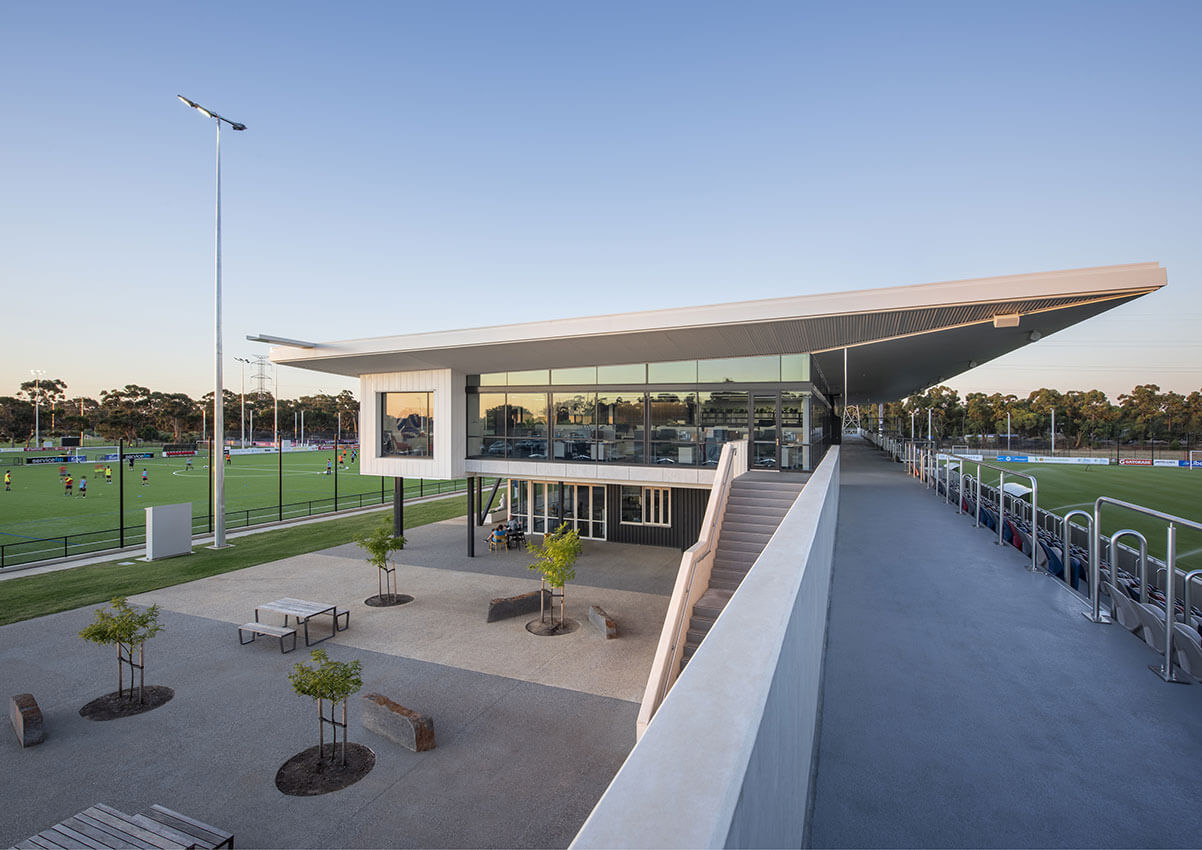State Centre of Football | Greenway Architects (SA) Pty Ltd

2023 National Architecture Awards Program
State Centre of Football | Greenway Architects (SA) Pty Ltd
Traditional Land Owners
Year
Chapter
South Australia
Category
Builder
Photographer
Project summary
The State Centre of Football development delivers as a vital and sustainable grass roots to elite level football (soccer) facility, integrated into the wider State Sports Park precinct at Gepps Cross.
The project provides facilities that cater for all levels of the sport from social participation to elite level competition as well as a corporate headquarters for Football SA. The playing spaces are capable of hosting local club games, development programs, FFA Cup matches and national and international level training and events. The facility is to be used as a training facility for the Womens World Cup in 2024.
The project reflects exceptional value for money but still delivers an attractive, high quality durable and highly functional outcome that will serve the Adelaide Football community for many years to come. All stakeholders involved with the project are immensely proud of the outcome. Football has a wonderful new home!
South Australia Jury Presentation
The development is an excellent example of a very practical sporting asset that caters for community participants to the elite in a very cohesive way.
From an aesthetic perspective the design of the venue is very appealing for first time users. The building has several elements that complement the need for a practical venue that is easy to manage on a day to day basis.
The first 9 months of operation has been very positive. In excess of 15,000 hours of use are booked in at the venue in 2023 and this sees the venue operating at capacity.
Client perspective
Project Practice Team
Damon Stanley, CAD Technician
Jon Lowe, Design Architect
Nguyen Tran, Graduate of Architecture
Peter Tynan, Project Architect
Samantha Hay, Senior Interior Designer
Project Consultant and Construction Team
Anthony Davidson, Electrical Consultant
James Hayter, Landscape Consultant
Mario Macri, Structural Engineer
Matthew Fechner, Hydraulic Consultant
Samuel Mclean, Services Consultant
Tom Bernard, Quantity Surveyor
Tom McFarlane, Civil Consultant
Connect with Greenway Architects (SA) Pty Ltd









